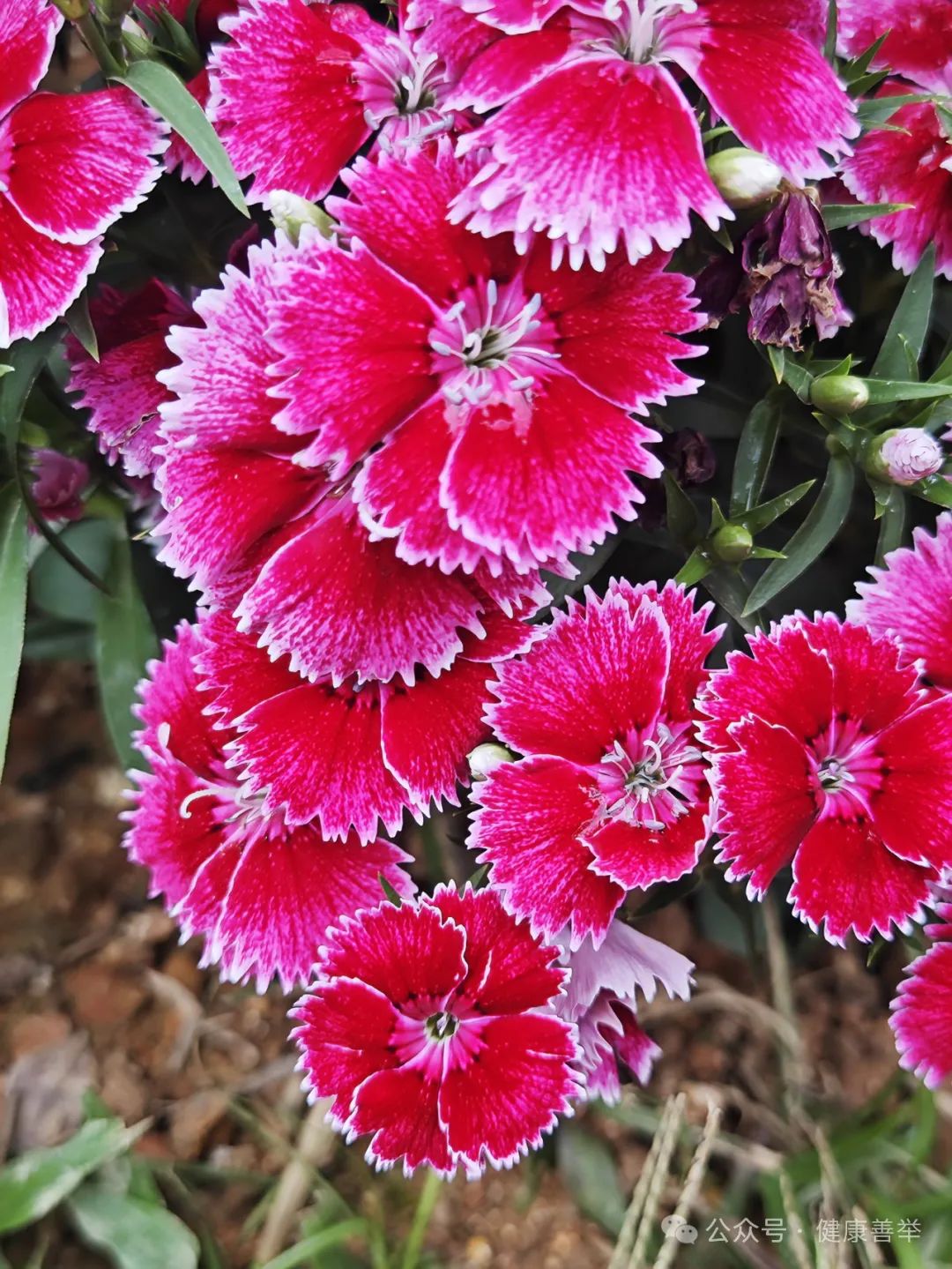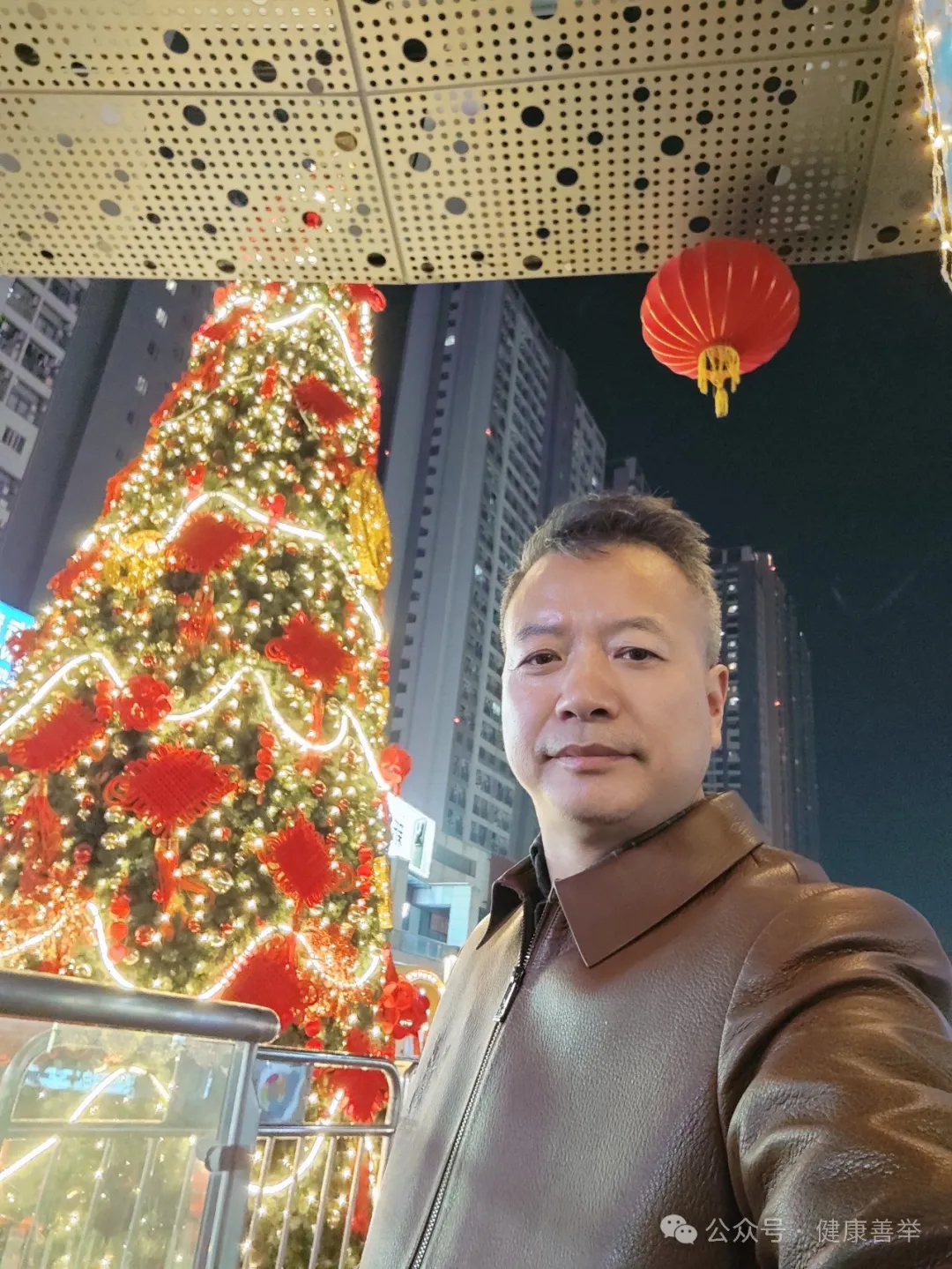
1. The Unsolved Mystery in the Emergency Room
At 3 AM in the emergency room, a 38-year-old programmer in Beijing curled up in pain on the examination bed, his hospital gown soaked with cold sweat. The monitor showed his body temperature was only 35.8°C, but strangely, his palms were exceptionally hot. The nurse recorded the contradictory symptoms: diarrhea 5-7 times a day yet thirsty, cold lower back and knees like ice but hot soles. For three years, he had visited departments of gastroenterology, endocrinology, and psychiatry, with his medical record stamped by 12 hospitals, antidepressants and gastrointestinal regulators piled in his drawer, yet the symptoms lingered like a stubborn ghost. Until an experienced TCM doctor lightly pressed his cold lower back and uttered three words: “Yin and Yang Deficiency.”
This diagnosis was like a thunderclap, cutting through the fog that modern medical instruments could not penetrate. In TCM theory, kidney deficiency is like a hidden current at the root of life, capable of triggering systemic diseases while adept at masquerading as various modern ailments. We cannot help but ask: how does this “innate foundation” hidden on both sides of the lumbar spine control the life and death codes of the human body?
2. The Dual Faces of the Fire of Life
1. Kidney Yang Deficiency: The Dimming Flame
When Kidney Yang—the flame that maintains life’s warmth—gradually dims, the body falls into an “energy winter.” Statistics from the Affiliated Hospital of Beijing University of Chinese Medicine show that among male patients over 45, 67% of chronic diarrhea cases and 52% of sexual dysfunction cases exhibit symptoms of Kidney Yang deficiency.
The Tip of the Iceberg of Disease Spectrum
Reproductive System Collapse: In male infertility patients with Kidney Yang deficiency, sperm motility is only 23% (normal > 60%), and acrosome enzyme activity drops to 4.8 U/L (normal > 15 U/L); in females, cold in the uterus is observed, with B-scan showing that 38% of patients with cold uterus infertility have an endometrial thickness of less than 7 mm, and their basal body temperature curve shows monophasic fluctuations.
Metabolic System Disorder: When Spleen Yang loses the warmth of Kidney Yang, the Digestive Department of Shanghai Ruijin Hospital tracked 200 chronic diarrhea patients, finding that 41% exhibited typical Kidney Yang deficiency features such as morning abdominal pain and worsening symptoms after consuming cold food, with their fecal calprotectin levels being 3.2 times higher than those of normal individuals.
Fluid Overload: Statistics from the Nephrology Department of Guangzhou University of Chinese Medicine show that 32% of chronic nephritis patients have a positive correlation between 24-hour urine protein quantification and cold intolerance; when the skin temperature of the lower back drops below 33°C, the urinary microalbumin excretion rate increases to 286 mg/24h (normal < 30 mg).
Initial Signs: The Vanguard of Winter
Patients often first feel a penetrating chill in the lumbar region, with infrared thermal imaging showing that the temperature in the Mingmen (Gate of Life) area is 2.3-3.1°C lower than that of healthy individuals. A TCM constitution survey found that 82% of those with Kidney Yang deficiency began wearing waist protection by late autumn, and their fingers are often stiff and cold in the morning, requiring ten minutes of rubbing to regain mobility. More subtly, the “Three Signs of Yang Deficiency”: immediate urination after drinking hot water (gastrointestinal motility tests show a 37% increase in colonic transit speed), afternoon drowsiness that worsens with sleep (polysomnography shows a 58% reduction in N3 deep sleep), and a tongue coating that is white and slippery like it has been soaked in milk (microscopic observation shows hyperplasia of filiform papillae with excessive keratinization).
2. Kidney Yin Deficiency: The Uncontrolled Furnace
In contrast to the cold signs of Yang deficiency, Kidney Yin deficiency is like a nuclear reactor without a cooling system, with empty fire rampaging within the body. The Sleep Research Center of Peking University found that among patients with stubborn insomnia, 61% exhibited signs of Yin deficiency and excess fire, such as a red tongue with little coating and a thin, rapid pulse, with activation of the hypothalamic-pituitary-adrenal axis being 2.7 times that of normal individuals.
The Scorching Imprint of Disease Spectrum
Neurological Storm: The lack of harmony between the heart and kidneys leads to neurotransmitter disorders; EEG monitoring at Peking Union Medical College Hospital shows that patients with Yin deficiency insomnia have a 47% reduction in δ waves (deep sleep waves) compared to healthy individuals, while high-frequency β waves increase by 32%, and serum glutamate levels rise to 189 μmol/L (normal < 100 μmol/L).
Metabolic Drought Crisis: Research from the Guang’anmen Hospital of the China Academy of Chinese Medical Sciences found that in patients with Yin deficiency diabetes, the “dry heat index” (including thirst level, skin resistance, and other 7 indicators) is positively correlated with glycosylated hemoglobin; when nighttime sweating exceeds 3 times a week, the insulin sensitivity index drops to 0.032 (normal > 0.05).
Reproductive System Heat: Statistics from the Urology Department of Shanghai Shuguang Hospital show that 63% of patients with premature ejaculation and nocturnal emissions exhibit signs of excess fire due to Yin deficiency, with their seminal fructose concentration dropping to 6.2 mmol/L (normal > 13 mmol/L), indicating impaired secretion function of the seminal vesicles.
Initial Signs: The Warning of Hidden Fire
Patients often inadvertently discover their palms feel like holding a warm treasure; a certain infrared thermal imaging study revealed that individuals with Yin deficiency have palm and sole temperatures 2.3-3.1°C higher than their trunk. More subtly, the “Three Dryness Signs of Yin Deficiency”: a dry throat like sandpaper upon waking (saliva secretion tests show a flow rate of only 0.12 ml/min, normal > 0.3 ml/min), facial flushing in the afternoon (facial blood flow tests show a 47% increase in capillary flow rate), and waking at night with sweat stains on the back of their pajamas resembling a butterfly (sweat electrolyte analysis shows sodium ion concentration dropping to 45 mmol/L, normal 65-80 mmol/L).
3. The Domino Effect
1. The Chain Collapse of Kidney Yang Deficiency
Spleen Yang Collapse: The Digestive Endoscopy Center of Guangzhou University of Chinese Medicine found that patients with chronic diarrhea due to Kidney Yang deficiency have intestinal villi atrophy 2.1 times that of ordinary irritable bowel syndrome patients, with the number of Bifidobacteria in their gut microbiota dropping to 23% of that in healthy individuals, while the proportion of Escherichia coli increases to 47%.
Heart Yang Failure: The Cardiology Department of the China Academy of Chinese Medical Sciences reported that patients with heart and kidney Yang deficiency have a 4.7 times higher probability of experiencing nocturnal palpitations compared to the general population; dynamic ECG shows a 58% increase in the incidence of ST segment depression, and while serum troponin I levels do not exceed the standard, the fluctuation amplitude reaches 32%.
Suspended Lung Qi: Data from the Respiratory Department of the China-Japan Friendship Hospital shows that in patients with chronic cough and asthma exacerbated by cold, the FEV1/FVC ratio drops to 62% (normal > 70%), while the exhaled nitric oxide (FeNO) concentration remains within the normal range, indicating non-inflammatory airway hyperreactivity.
2. The Rampant Momentum of Kidney Yin Deficiency
Depleted Liver Yin: Research from the Ophthalmology Department of Beijing Tongren Hospital found that patients with dry eye syndrome due to liver and kidney Yin deficiency have an increased tear osmotic pressure by 29%, and tear film break-up time is shortened to 4.2 seconds (normal > 10 seconds); confocal microscopy shows a decrease in conjunctival goblet cell density to 156 cells/mm² (normal > 300 cells/mm²).
Heart Fire Dominance: The Mental Health Center of West China Hospital reported that patients with anxiety due to heart and kidney disharmony have serum serotonin levels fluctuating 2.3 times more than those in healthy individuals, with functional MRI showing a 47% increase in amygdala activation.
Lung Yin Scorching: Data from the Respiratory Department of Zhongshan Hospital affiliated with Fudan University shows that patients with chronic cough due to lung and kidney Yin deficiency have a ciliary beating frequency in the bronchial mucosa dropping to 12 times/minute (normal > 20 times/minute), and rheological testing of sputum shows an increase in viscoelastic modulus to 3.7 kPa (normal < 2.5 kPa).
4. The Key to Reversing Life
Kidney Yin and Yang are an inseparable whole, existing in mutual dependence. Some people have Kidney Yang deficiency, while others have Kidney Yin deficiency; regardless of whether it is Kidney Yang or Yin deficiency, over time, both will lead to dual deficiency. This not only causes a variety of diseases in the body but also leads to bone atrophy and joint pain. Therefore, when there are signs of Kidney Yin or Yang deficiency, timely intervention is necessary.
There are many methods to tonify Kidney Yin and Yang, but the two simplest methods are: 1. Wake up early to tonify Kidney Yang, sleep early to tonify Kidney Yin. 2. Movement generates Yang, stillness generates Yin; combining movement and stillness can tonify both Yin and Yang. However, in real life, too many people struggle to get up in the morning and do not want to sleep at night. Often, they are too lazy to move or act frantically. Balancing movement and stillness is essential; excessive movement harms Yang, while prolonged stillness can harm Yin. The practice of Qi cultivation from the Luofu Mountain Taoist tradition is the crystallization of ancient wisdom for health and longevity. As long as the key points of the movements are executed correctly, it can not only tonify Kidney Yang and Yin but also nourish the liver, spleen, lungs, and heart simultaneously. A person with sufficient Qi and strong muscles has a strong heart and lungs, and a strong liver, spleen, and kidneys, which means a strong vitality.
5. Modern Revelation
In this 24-hour brightly lit era, our kidney essence is experiencing unprecedented depletion: Harvard Medical School research confirms that blue light from phones at 2 AM inhibits melatonin secretion, equivalent to daily theft of 3% of Kidney Yin; the National Institute for Environmental Studies in Japan estimates that the “artificial cold evil” from air-conditioned rooms and cold drinks weakens Kidney Yang by 1.2 TCM units annually; the Stanford University Stress Research Center found that excessive cortisol from sustained stress can increase adrenal weight by 23%, akin to scorching Kidney Yin like cooking oil over a fire. The China Center for Disease Control and Prevention’s “National Health White Paper” shows that the detection rate of symptoms related to kidney deficiency among people aged 30-45 has increased by 217% compared to twenty years ago. This is not only a warning for personal health but also a reflection of civilization diseases in the microscopic world of the human body. While modern medicine focuses on precise molecular-level interventions, TCM’s holistic view reveals that true health management is about safeguarding the energy conservation of the root of life.
Conclusion: A Dialogue with the Innate Foundation
After the programmer persisted in practicing Qi cultivation for three months, his Kidney Yin and Yang not only improved qualitatively but he also transformed from being evasive to becoming the project leader at his company, and his relationship with his partner became more harmonious. Essentially, this improvement in kidney function enhanced both his willpower and energy. During his last follow-up visit, the TCM doctor pointed to the Taiji diagram in the consultation room and said: “Do you see the eyes of the Yin-Yang fish? True health is not about eliminating all symptoms but understanding the codes that the body emits.”
The city remains brightly lit at night, but those who have learned to converse with their kidney essence are using ancient wisdom to combat modern disorientation—they know that when the lower back is warm like spring, life will naturally find its balance; when the palms are no longer hot, the spirit will eventually return to a tranquil harbor. This may be the most precious revelation that TCM offers to modern people: in the pursuit of technological advancement, never forget the body, the life book written in Yin and Yang.
Appendix 1: A photo of the author’s life when he did not practice Qi cultivation in 2022, an old man.



Appendix 2: A photo of the author after practicing Qi cultivation on January 20, 2025. His white hair has turned black again, and it has thickened; he is full of vitality and has reversed aging.



For friends who do not know how to practice Qi cultivation and wish to regain health through it, you can contact me. I wish all friends who read this: may the new year bring you all the best and fulfill your wishes!
Previous Reviews
1. Clinical Interview with Renowned Doctor Xu Zhendong: A TCM Practitioner Respected Like a Khan
2. Bian Que’s Function of Penetrating the Human Body is Not Artistic Exaggeration
3. The Greatest Blessing for Bone Disease Patients is Meeting Song Depei
4. Cover Doctor Wang Daokun: Innovation in TCM Should Be a Rediscovery of Traditional Medicine
5. Interview with Cover Doctor Zhang Jinbo: Unity of Knowledge and Action in the Universe
6. Clinical Interview with Lu Fuhong: A Good TCM Practitioner Must Keep Up with the Times
7. Clinical Interview with You Xiyin: Treating Without Knowing the Cause is Equivalent to Murder
8. Clinical Interview with Chen Yuanwei: A Physician Must Have the Heart to Sacrifice
9. Doctors I Have Met with Celestial Aura
10. Cover Character Liu Baoyan: Creating the International Trend of Acupuncture in Four Languages
11. Feasibility Analysis Report on Popularizing the Qi Cultivation Method of Luofu Mountain Taoism to the Public

